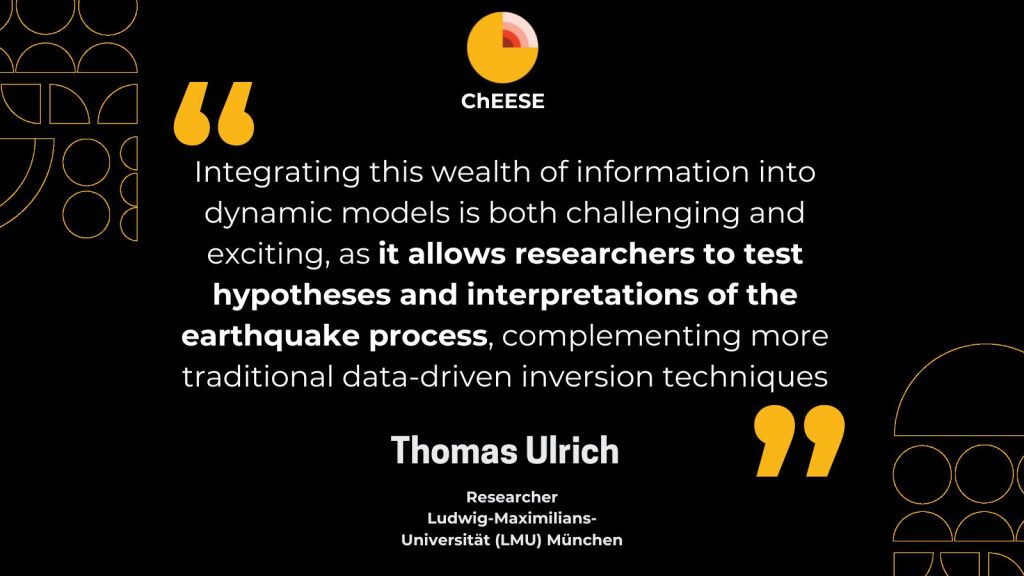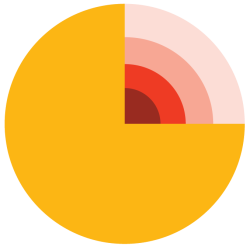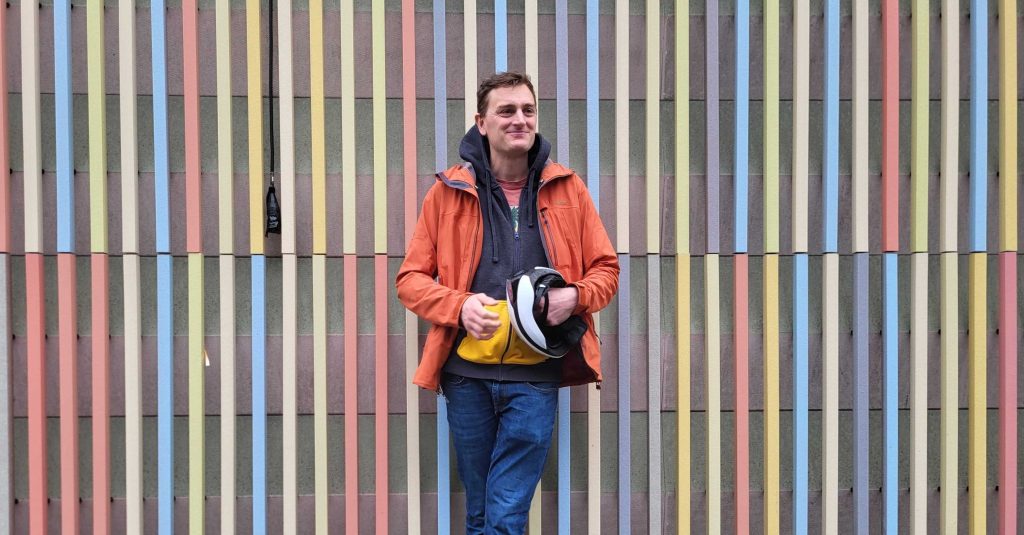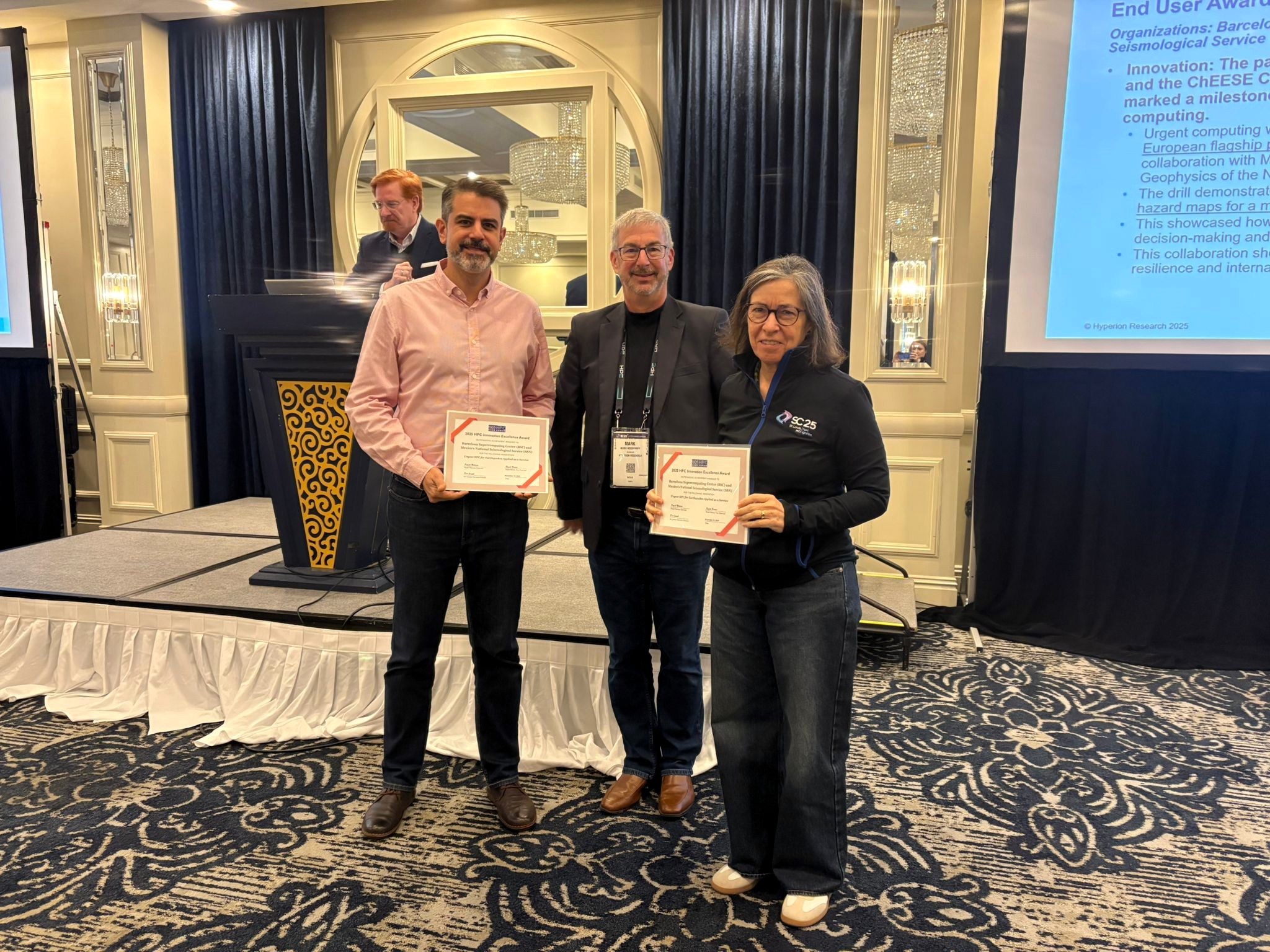Thomas Ulrich, a researcher in the Department of Earth and Environmental Sciences – Geophysics at Ludwig Maximilian University of Munich (LMU), navigates the intricate dynamics of earthquakes by bridging seismology, computational modeling, and high-performance computing. His work focuses on simulating earthquake rupture dynamics and ground motion, crucial for improving seismic hazard assessment. By developing and refining cutting-edge numerical codes like Tandem, Thomas and his team at LMU contribute to more accurate and physics-based earthquake risk models.
In this interview for the Meet the Researcher series of the ChEESE Project, Thomas shares his unconventional journey into seismology, from engineering to earthquake modeling. He discusses the challenges and breakthroughs in integrating diverse geological and geophysical data, the significance of interdisciplinary collaboration, and how advanced simulations are shaping the future of seismic risk assessment.
How did you begin your research in the field of earthquakes, and what excites you most about your work?
I entered this field somewhat by accident. In 2009, after graduating from a French engineering school, I was looking for jobs in industry. Still, I considered a position as a natural risk engineer at BRGM in France, which was convenient for me because it was close to where I lived, and I got the position. The head of the department assigned me to the seismic risk unit, and I never regretted his choice! In 2015, I began a Ph.D. focused on earthquake rupture dynamics at LMU, which I defended in 2020. Modelling earthquake dynamics allows for the integration of a wide range of observations, including high-resolution fault mapping, ground deformation inferred from satellite geodesy, field studies, and waveforms recorded by seismic networks. The quality, diversity, and volume of available observations are steadily increasing, enabling the development of ever more detailed earthquake models. Integrating this wealth of information into dynamic models is both challenging and exciting, as it allows researchers to test hypotheses and interpretations of the earthquake process, complementing more traditional data-driven inversion techniques.
What are the main responsibilities of Ludwig Maximilian University of Munich in the ChEESE-2P project?
Our group at LMU is responsible for maintaining, developing and applying Tandem, a seismic cycling code used for modeling sequences of earthquakes and aseismic slip. We also collaborate with the team of Prof. Michael Bader at Technische Universität München, to maintain and develop SeisSol, a software package for modeling earthquake rupture dynamics, seismic, acoustic and tsunami wave propagation. Tandem was recently developed by Carsten Uphoff during his postdoc at LMU, under the guidance of Alice-Agnes Gabriel (UCSD, San Diego, and visiting professor at LMU) and Dave May (UCSD).
This state-of-the-art code opens many avenues for modeling earthquake interactions in complex geometrical structures, which we are beginning to explore within our group. LMU has been involved in auditing tandem’s scalability, porting the code to GPUs, and developing continuous integration workflows. Additionally, LMU contributes to developing simulation cases based on SeisSol and Tandem, leveraging project advancements for large-scale production simulations on EuroHPC systems.
Could you elaborate on how your research findings regarding ground motion and rupture dynamics can be applied to improve earthquake risk assessment models within the ChEESE project?
State-of-the-art earthquake risk assessment models are typically based on empirical relationships and ground-motion prediction equations that relate earthquake parameters, such as magnitude and distance, to ground-motion characteristics. These models are usually regionally constrained and struggle to incorporate local effects, such as sedimentary basin structures, topography, or rupture directivity, the focusing of seismic waves along the rupture propagation direction. Physics-based earthquake models can account for these effects, producing synthetic ground motions adapted to local conditions. By combining results from multiple earthquake scenarios, this approach enhances seismic hazard assessments, complementing traditional data-driven methods. Specifically, a physics-based workflow called CyberShake, originally developed for seismic hazard assessment in California, is being adapted to Southern Iceland by LMU, BSC, and IMO as part of the ChEESE project.
Given your experience in integrating geological, geodetic, and ground motion data, what strategies do you believe are essential for effectively utilizing such data in the objectives of the ChEESE project?
Integrating a greater diversity and quantity of observations into dynamic rupture models can help better constrain these models, leading to more robust models and a deeper understanding of the physical mechanisms involved in earthquake faulting. However, fitting a wide range of observations is challenging and requires an increased number of forward model simulations, of possibly higher resolution. Having faster codes that can operate efficiently across multiple computing architectures is therefore a significant asset in addressing this challenge. Additionally, incorporating new physics into the code allows for testing hypotheses to explain features observed in earthquake data. For instance, models that account for the reduction of rock elastic properties due to damage have recently been developed in SeisSol. These models could help reproduce specific ground motion features and quantify their effects, leading to more realistic strong-motion synthetics.

Reflecting on the past year, what moment stands out as particularly significant for you and the project?
In 2024, the first two application papers related to Tandem were submitted/published, led by James Biemiller from USGS and Jeena Yun from UCSD San Diego, respectively. They focus on two very different topics: the role of megathrust geometry in the seismic cycle and mainshock-aftershock interactions, demonstrating the broad new scientific possibilities enabled by the code. The General Assembly in Iceland was also a major milestone, as it allowed us to meet in person and put a face to many of the collaborators we had been working with throughout the project. We also had the opportunity to visit the volcanic eruption site near Grindavík, which was truly impressive.
How do you perceive the importance of interdisciplinary collaboration (e.g., between geophysicists, engineers, and computer scientists) in enhancing the outcomes of both your research and the ChEESE project?
At Munich, we are fortunate to have a long-standing and strong collaboration with Michael Bader’s team from the Department of Computer Science at TUM, which is also part of the ChEESE project. This partnership has been instrumental in transforming SeisSol into a highly efficient code capable of running on modern HPC systems, enabling large-scale dynamic rupture simulations, such as our studies of the Mw 9.2 2004 Sumatra-Andaman earthquake.
Recent developments in SeisSol, particularly its optimization for GPUs during the project, have led to significant speed-ups and have allowed us to more efficiently utilize Euro-HPC machines. The simulation cases within the project also foster exciting interdisciplinary collaborations. For instance, we are planning to model the 2022 Hunga Tonga–Hunga Haʻapai eruption, integrating coupled landslide-tsunami models, as well as earthquake-tsunami modeling of the Mw 8.8 2010 Chile earthquake.
Can you discuss any recent achievements or milestones your team has reached within the framework of the project?
The project has allowed us to port Tandem to both NVIDIA and AMD GPUs, identify and resolve issues, and assess the code’s scalability on these architectures. This enables us to run the code on a wider range of platforms and better understand the possibilities it offers in terms of the size and complexity of scientific problems we can tackle.
If you weren’t a researcher, what career path would you have chosen?
I’ve always been passionate about science and engineering, so if I weren’t a researcher, I think I would have worked in a related field. For instance, the recent advancements in machine learning techniques, including large language models, are fascinating and already shaping our daily lives. Working in this field would be very exciting!
For aspiring scientists or individuals interested in your field, what advice would you give to inspire and guide them in pursuing this career?
Seismology is a rapidly evolving field, driven by the ever-increasing amount of observational data and the development of new techniques. For example, the use of instrumented fiber optic cables has enabled tomographic studies with unprecedented resolution, without requiring extensive instrument deployment. Similarly, aftershock detection through machine learning has provided high-resolution insights into fault structures, often revealing unexpectedly complex fault networks.
Advancements in high-performance computing (HPC), combined with code optimization, have allowed us to tackle problems that were unimaginable just a few years ago. These exciting scientific developments, along with the recurring occurrence of devastating earthquakes, such as the recent Mw7.7 Myanmar earthquake, serve as strong motivation to continue advancing research in this field and striving to mitigate the impact of future earthquakes.
Beyond science, can you share a cultural piece (film, book, or podcast) that has significantly influenced your perspective or approach to your work?
I was greatly influenced by Why We Sleep by Matthew Walker, which I read during my Ph.D. The book demonstrates how securing sufficient sleep is essential for optimal brain function and overall health. It made me more mindful of distributing my workload more effectively, leading to a better work-life balance and helping me stay focused and productive in my research.
Published on April 07 2025.
By Aerton Guimarães
ChEESE-2P Dissemination Team
Picture taken by Félix (Thomas’s 7-year-old son and rising photography star)



